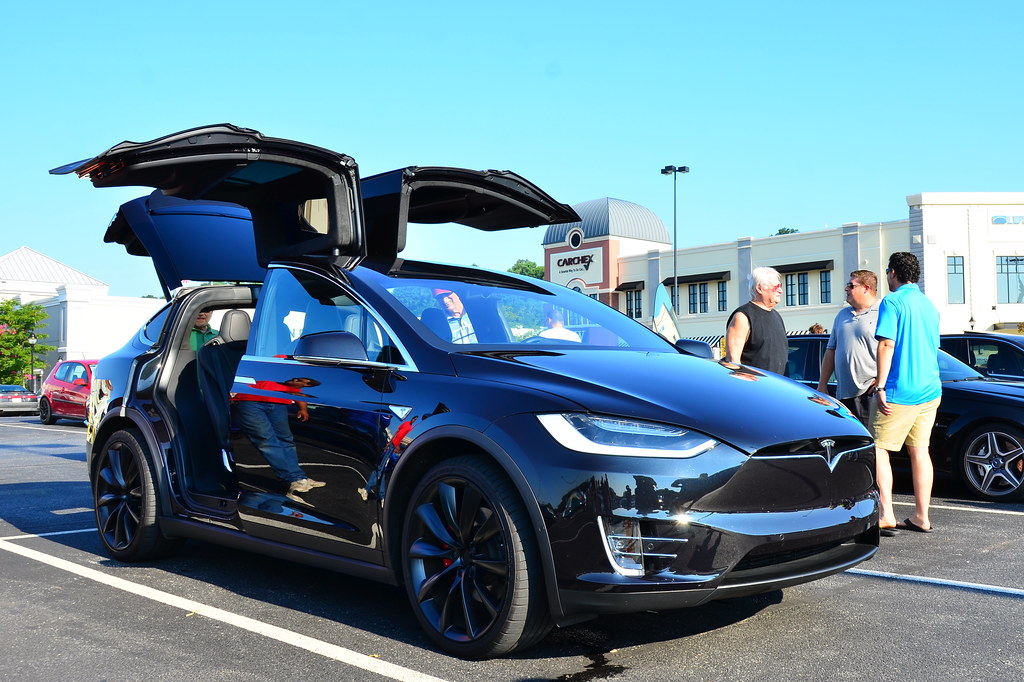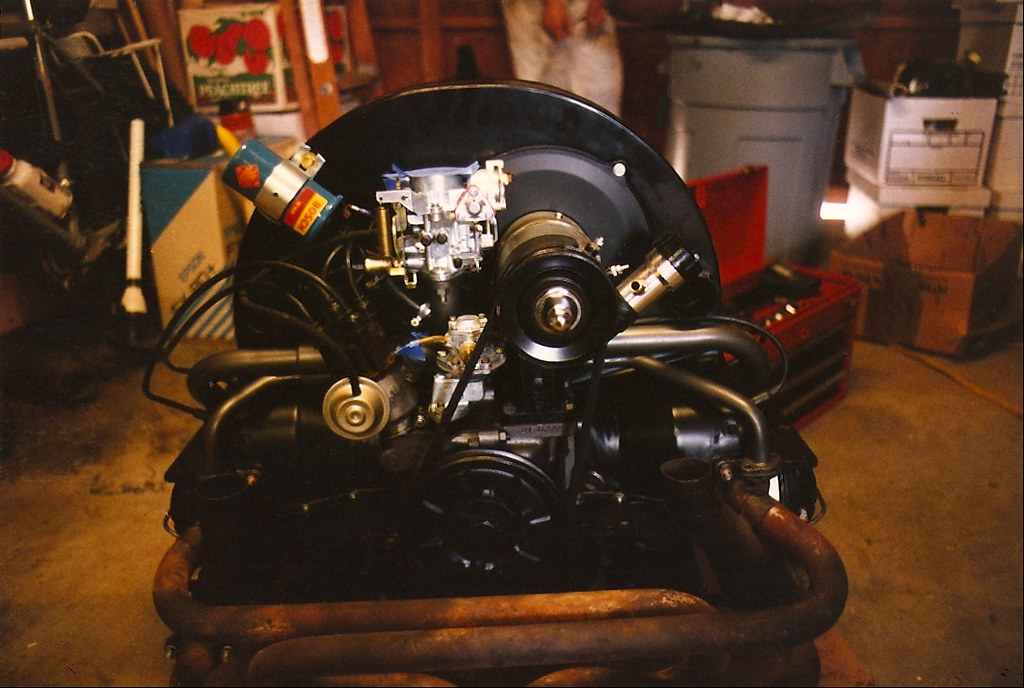
Owning a pickup truck can undoubtedly be an exciting prospect, especially for those who appreciate both its robust utility and commanding style. These versatile vehicles are specifically engineered to handle heavy loads, conquer challenging off-road terrains, and even serve as reliable daily commuters. However, beneath the surface of these appealing benefits lies a significant layer of financial responsibilities that often go unexamined. From the moment a truck rolls off the lot, myriad expenses begin to accumulate, making it crucial for potential buyers to consider every cost involved before committing to a purchase. It’s not just about the initial sticker price; it’s about understanding the long-term financial landscape.
Indeed, while many buyers naturally prioritize obvious factors like horsepower, towing capacity, payload, and the upfront cost, a much more comprehensive perspective is needed: the total cost of ownership (TCO). This long-term view encompasses a wider array of expenditures, including fuel costs, insurance premiums, depreciation, maintenance, and repairs, alongside the eventual resale value. It’s a critical metric because some trucks that appear affordable initially can unexpectedly become financial drains over time, while others with higher manufacturer’s suggested retail prices (MSRPs) might surprisingly save owners thousands over the vehicle’s lifespan. Understanding TCO is particularly essential for trucks, given their design for long-term use and the heavy wear and tear they often endure, whether from daily commutes, weekend hauling, or demanding job site duties. Reliability, fuel efficiency, and retained value therefore become paramount.
This first section will delve into the critical aspects of vehicle ownership that extend far beyond the showroom floor. We will explore five distinct pickup truck models that stand out for their exceptional long-term value, vehicles that masterfully combine smart engineering, manageable maintenance requirements, and consistently strong resale performance. For those who plan to keep their trucks for extended periods—typically 5 to 10 years—or accumulate substantial mileage, these insights are designed to empower you to make a smarter, more financially sound choice. By focusing on these cost-efficient champions, we aim to shed light on how selecting the right truck can significantly impact your financial well-being over its lifetime.
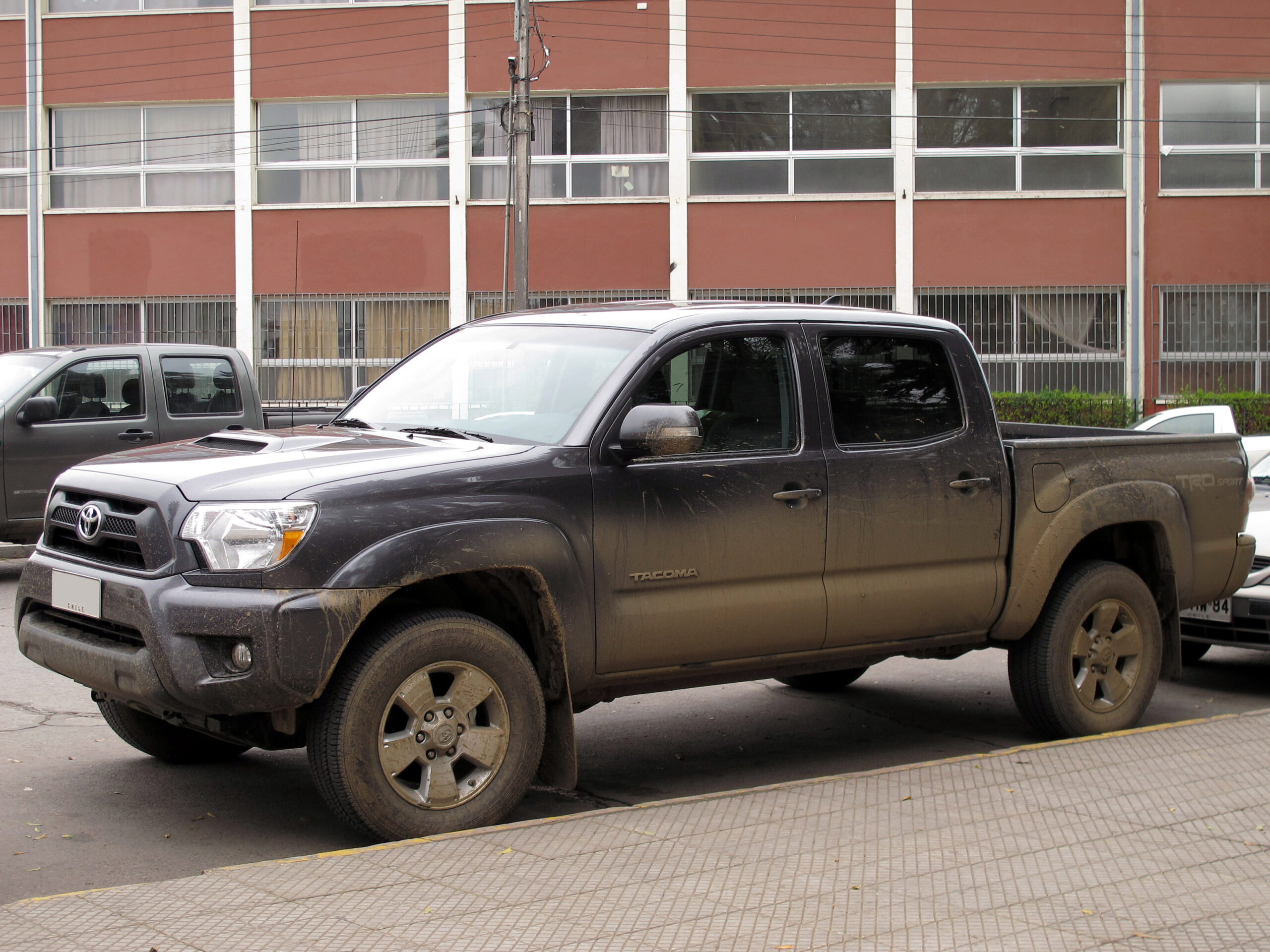
1. **Toyota Tacoma**
The Toyota Tacoma is frequently heralded as the definitive standard in the midsize truck category, a reputation it has earned for very compelling reasons. While it might not always lead the pack in terms of sheer horsepower or opulent luxury, its true strength lies in an area that holds immense significance for owners committed to long-term vehicle possession: its remarkably low total cost of ownership. The Tacoma has forged a near-legendary status for its unwavering durability, consistently robust resale value, and minimal maintenance demands, solidifying its position as one of the most economically sensible trucks to own over an extended period.
A pivotal contributor to the Tacoma’s impressive TCO is its extraordinary reliability. Esteemed sources such as J.D. Power and Consumer Reports routinely rank the Tacoma among the most dependable pickups available in the market. Instances of major mechanical issues are notably infrequent, and it is not at all uncommon to observe Tacomas performing powerfully and reliably well past the 200,000-mile mark. This inherent dependability substantially reduces the frequency and cost of repair bills, minimizes inconvenient downtime, and collectively keeps overall ownership expenses at a comfortably low level for its dedicated owners.
Another substantial factor in its favor is its exceptional ability to resist depreciation—or rather, the remarkable lack thereof. The Toyota Tacoma retains its value more effectively than almost any other truck in its segment. Its resale values remain impressively high, even after five years or more of ownership, a trend particularly pronounced for its coveted off-road-focused trims like the TRD Off-Road and TRD Pro. This strong performance in the used market translates directly into fewer financial losses should you decide to trade in or sell the vehicle at a later stage, safeguarding your investment.
When evaluating other cost metrics, the Tacoma presents competitive fuel economy figures for its class, especially when equipped with the four-cylinder engine and configured with two-wheel-drive. Insurance costs are generally moderate, and while maintenance might not be the absolute cheapest in its specific segment, it is notably predictable and required infrequently. Toyota’s expansive dealer network, coupled with its enduring reputation for straightforward service procedures, further assists in minimizing long-term expenses, adding another layer of financial peace of mind.
While the Toyota Tacoma may not boast the same level of plush refinement or incorporate the absolute cutting-edge technology seen in some of its newer rivals, it more than compensates with its bulletproof engineering and a collection of time-tested, proven components. For discerning buyers who are keen to maximize every dollar spent and intend to keep their vehicle for a substantial duration, very few options can genuinely rival the Tacoma’s comprehensive and compelling overall value proposition. It remains an exceptionally smart investment on today’s roads.
Car Model Information: 2019 Toyota Tacoma TRD Off Road
Name: Toyota Tacoma
Caption: 2020 Toyota Tacoma TRD Off-Road
Manufacturer: Toyota
Production: January 1995 – present
ModelYears: 1995–present
Class: unbulleted list
Layout: Front-engine, rear-wheel-drive layout
Predecessor: Toyota Hilux (N80)
Categories: 2000s cars, 2010s cars, 2020s cars, All-wheel-drive vehicles, All Wikipedia articles written in American English
Summary: The Toyota Tacoma is a pickup truck manufactured by Japanese automobile manufacturer Toyota since 1995. The first-generation Tacoma (model years 1995 through 2004) was classified as a compact pickup; subsequent models are classified as mid-sized pickups. The Tacoma was Motor Trend’s Truck of the Year for 2005.
As of 2015, the Tacoma was sold in the United States, Canada, Mexico, Costa Rica, Bolivia, Bermuda, and the French overseas collectivity of New Caledonia. Most markets across the world receive the Toyota Hilux in lieu of the Tacoma.
The name “Tacoma” was derived from the Coast Salish peoples’ name for Mount Rainier in the U.S. state of Washington.
Get more information about: Toyota Tacoma
Buying a high-performing used car >>>
Brand: Toyota Model: Tacoma
Price: $30,399 Mileage: 107,081 mi.
Read more about: Beyond the Badge: Uncovering the Quirky and Captivating Origins of 14 Iconic Car Logos
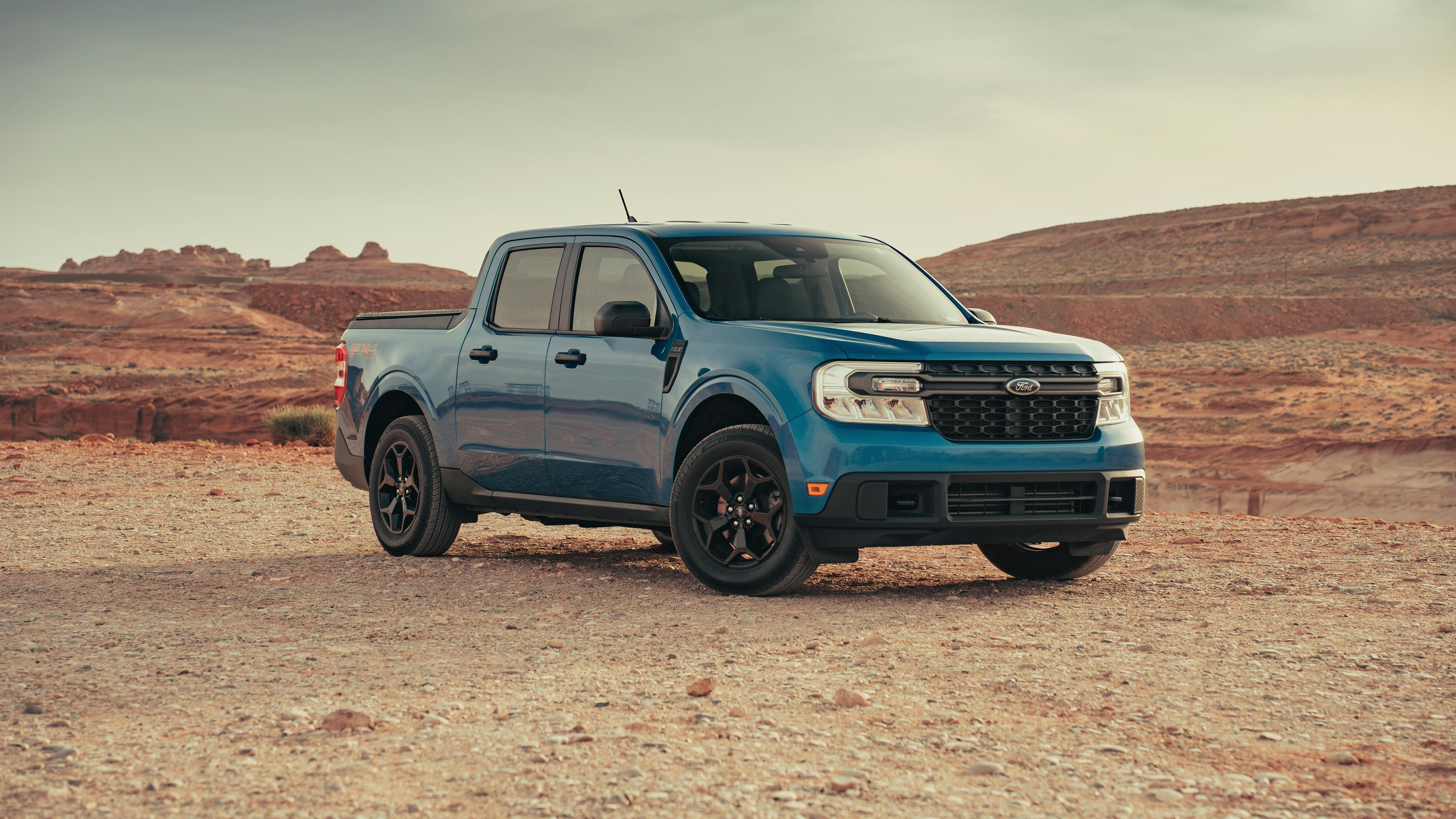
2. **Ford Maverick**
The Ford Maverick has masterfully redefined perceptions of what a truck can represent in the contemporary automotive market. As a compact, unibody pickup offering an innovative hybrid powertrain option, it delivers a unique combination of attributes that are currently unmatched by any other truck: outstanding fuel efficiency, an accessible low entry price point, and remarkably minimal long-term ownership costs. For drivers whose primary focus is to achieve the lowest possible total cost of ownership, the Maverick emerges as an indisputable and clear front-runner, truly setting a new benchmark.
The most significant advantage contributing to the Maverick’s low TCO is undeniably its standard hybrid engine. This powertrain achieves an impressive EPA-estimated 42 mpg in city driving and 33 mpg on the highway. These figures are groundbreaking, far surpassing those of any other pickup truck, including even its compact rivals. Over a typical 5-year ownership period, such exceptional fuel efficiency has the potential to save owners thousands of dollars, a benefit that is particularly pronounced for urban drivers or those who regularly use their truck for commuting purposes.
Furthermore, the Maverick’s starting price is refreshingly low and highly attractive. Upon its initial launch, the base trim of the Maverick was positioned at a price point under $25,000, and even generously well-equipped versions remain more affordable than the vast majority of full-size or midsize competitors. Crucially, despite its accessible pricing, the Maverick does not convey a sense of being “cheap.” It comes standard with an array of desirable features, including an 8-inch touchscreen, seamless Apple CarPlay integration, and a surprisingly spacious cabin for a vehicle of its compact dimensions, enhancing its overall perceived value.
Beyond the initial purchase price and exceptional fuel economy, the Maverick also benefits significantly from inherently low maintenance costs. Hybrid systems are generally known to possess fewer wear-and-tear components compared to traditional gasoline-only drivetrains, and Ford’s proven 2.5-liter hybrid engine is already demonstrating a strong track record of reliability. Insurance premiums are also comparatively modest, a reflection of its compact size and solid safety ratings, further contributing to its appeal as an economical choice for truck ownership.
Depreciation for the Maverick has been minimal thus far, a trend partly attributable to the ongoing situation where demand continues to outpace supply. Early Maverick buyers are consistently experiencing strong resale values, and the truck’s broad practical appeal suggests that healthy long-term demand will persist, especially among fleet operators, urban dwellers, and lifestyle-oriented buyers. While it is not engineered for heavy-duty towing or extreme off-road endeavors, the Maverick is also not attempting to compete with full-size workhorses. It is, instead, a consciously cost-effective, urban-friendly utility vehicle meticulously designed for individuals who require truck functionality without the typical accompanying financial burden.
In essence, the Ford Maverick fundamentally redefines the traditional truck ownership model. For those who prioritize minimal fuel expenses, manageable maintenance outlays, and outstanding versatility, it unequivocally stands as one of the most affordable trucks to own—not just today, but significantly over the long haul. Its innovative approach offers a compelling argument for a new generation of truck buyers seeking financial prudence.
Car Model Information: 2024 Ford Maverick XL
Categories: All set index articles, Articles with short description, Ford vehicles, Set index articles on cars, Short description is different from Wikidata
Summary: Ford has marketed the following automobiles models using the Ford Maverick nameplate:
The Ford Maverick (1970–1977), a compact car sold in North America and Brazil during the 1970s
The rebadged Nissan Patrol Y60 sold by Ford Australia under the Button car plan from 1988 to 1994
The rebadged Spanish-built Nissan Terrano II, sold by Ford of Europe from 1993 to 1999
The European and Chinese version of the Ford Escape, sold from 2001 to 2005
The Ford Maverick (2022), a compact pickup truck sold in the Americas
Get more information about: Ford Maverick
Buying a high-performing used car >>>
Brand: Ford Model: Maverick
Price: $26,180 Mileage: 6,350 mi.
Read more about: Seriously, What Happened? 13 Once-Favorite 4x4s That Off-Roaders Now View With Suspicion (And Why!)

3. **Chevrolet Colorado (4-Cylinder)**
The Chevrolet Colorado, particularly when configured with its 4-cylinder engine, stands out as a formidable contender for any buyer seeking a midsize truck characterized by a low total cost of ownership. While the available V6 and diesel engine options certainly enhance performance capabilities and towing prowess, it is the standard 2.7L turbo 4-cylinder that truly delivers the most compelling long-term value. This engine achieves an impressive balance of fuel efficiency, robust capability, and commendably low maintenance requirements, making it a smart choice for the cost-conscious.
The latest generation of the Colorado has introduced significant advancements in both its design aesthetic and practical functionality. The turbocharged four-cylinder engine now serves as the standard powerplant across the entire lineup, offering a potent combination of 310 horsepower coupled with excellent fuel economy ratings, achieving up to 20 mpg in the city and 25 mpg on the highway. These figures are notably impressive for a midsize truck, especially one that steadfastly refuses to compromise on its towing ability—this particular engine, in the correct configuration, is still capable of hauling in excess of 7,000 pounds.
A key aspect that makes the 4-cylinder Colorado particularly appealing is its inherently low ownership overhead. When compared directly to its V6 and diesel counterparts, the 4-cylinder variant benefits from possessing fewer complex parts requiring maintenance, superior fuel efficiency, and typically lower insurance rates. Routine maintenance tasks for this engine are straightforward and generally affordable, and Chevrolet’s extensive dealer network ensures that both reasonably priced parts and readily available service expertise are accessible across North America, further stabilizing long-term costs.
Depreciation for the Colorado is moderate, but its resale value has seen a noticeable improvement with the introduction of the latest generation. Models equipped with the turbo-four engine are specifically anticipated to retain their value more effectively, a trend driven by buyers increasingly prioritizing efficiency alongside utility in their purchasing decisions. Moreover, because the Colorado shares a substantial number of mechanical components with its larger stablemates, the Silverado and GMC Canyon, replacement parts and skilled repair expertise are widely accessible, which consistently helps to keep long-term ownership costs in check.
Additionally, General Motors’ comprehensive warranties, such as the 5-year/60,000-mile powertrain warranty, offer significant peace of mind during the crucial initial years of ownership—a vital element in effectively managing TCO. While the interior might not exude the same level of flashiness as some competing models, and higher-end trims can indeed escalate the overall cost, the base and mid-level models of the 4-cylinder Colorado occupy a sweet spot for those who seek a reliable, no-frills workhorse without the burden of unpredictable expenses. It is a compelling option for those valuing long-term financial stability.
Car Model Information: 2022 Chevrolet Colorado ZR2
Name: Chevrolet Colorado
Caption: 2024 Chevrolet Colorado Z71
Manufacturer: General Motors
Production: 2003–2012, 2014–present (US),2004–2020
(Thailand),2011–present (Brazil)
Class: Pickup truck,Pickup truck
Layout: Front-engine, rear-wheel-drive layout
Predecessor: Chevrolet S-10,Chevrolet D-Max,Holden Rodeo,Holden Ute
Aka: GMC Canyon,Holden Colorado
Categories: 2010s cars, 2020s cars, All-wheel-drive vehicles, All articles with dead external links, Articles with dead external links from November 2016
Summary: The Chevrolet Colorado (sharing mechanical commonality with the GMC Canyon) is a series of compact pickup trucks (mid-size since second generation) marketed by American automaker General Motors. They were introduced in 2004 to replace the Chevrolet S-10 and GMC S-15/Sonoma compact pickups. The Colorado is named after the U.S. state of Colorado, while the Canyon took its name from the deep chasm between cliffs.
Get more information about: Chevrolet Colorado
Buying a high-performing used car >>>
Brand: Chevrolet Model: Colorado
Price: $33,991 Mileage: 40,794 mi.
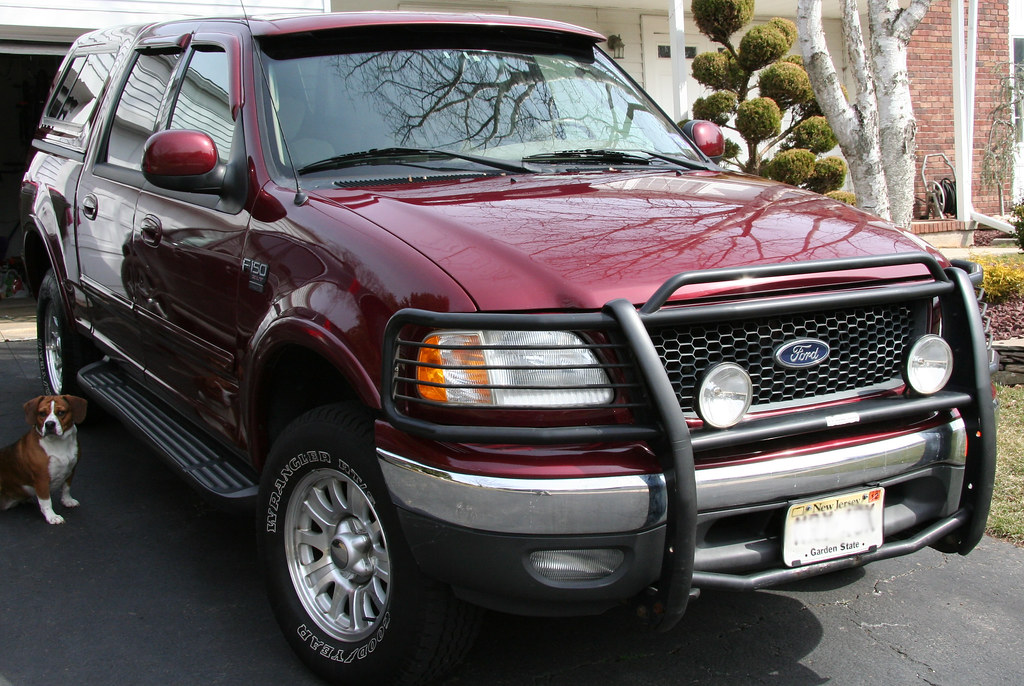
4. **Ford F-150 Hybrid (PowerBoost)**
The Ford F-150 Hybrid, popularly known as the PowerBoost, represents a distinctive and rare offering within the truck world: a full-size pickup that delivers tangible, real-world fuel savings without compromising on its formidable performance capabilities. For buyers who demand heavy-duty utility and cutting-edge technology but are unwilling to endure the burden of hefty weekly fuel costs, the F-150 Hybrid stands as one of the most intelligent choices for total cost of ownership within the full-size segment. It masterfully bridges the gap between power and economic prudence.
The innovative PowerBoost system ingeniously combines a potent 3.5-liter EcoBoost V6 engine with a substantial 44-horsepower electric motor, culminating in an impressive combined output of 430 horsepower and a robust 570 lb-ft of torque. This prodigious power is more than sufficient for rigorous towing, heavy hauling, or challenging off-road excursions. Remarkably, despite this immense capability, it also achieves an EPA-estimated 24 mpg in both city and highway driving when configured with two-wheel drive—a class-leading fuel economy figure for a full-size pickup truck. Over a typical 5–10 year ownership period, this advanced hybrid drivetrain has the potential to save owners many thousands in fuel expenses compared to its traditional gasoline-only counterparts, marking a significant long-term financial advantage.
Yet, the financial benefits of the F-150 Hybrid extend far beyond savings at the fuel pump. The PowerBoost model ingeniously includes Ford’s Pro Power Onboard generator system, which effectively eliminates the necessity for an external generator on demanding job sites or during outdoor recreational adventures. This integrated feature adds a dual layer of convenience and remarkable cost-effectiveness, further enhancing the truck’s overall utility and economic appeal by reducing the need for additional equipment and associated costs.
In terms of reliability, the hybrid system integrated into the F-150 PowerBoost has consistently demonstrated its robustness and smooth operation, requiring minimal additional maintenance compared to conventional gasoline engines. Ford’s comprehensive 8-year/100,000-mile warranty specifically covering hybrid components provides an extra layer of invaluable financial protection, solidifying its position as a secure and well-protected long-term investment. This extended warranty underscores Ford’s confidence in the hybrid technology and offers significant peace of mind to buyers.
Resale values for the PowerBoost variant are notably strong, particularly among tech-savvy buyers who highly value innovation and fuel economy in their vehicles. Unlike some earlier hybrid truck iterations, the F-150 Hybrid is not a niche product; it is widely available, generously equipped, and robustly supported by Ford’s vast and established service network. While its initial price point might be higher than that of base trims, the PowerBoost can, in fact, prove less expensive to own over its lifespan, especially for drivers who accumulate higher annual mileage or utilize the truck for a blend of commercial and recreational purposes. It offers a unique value proposition for a diverse range of users.
Therefore, if your desire is to harness the full-size capability of an F-150 without being burdened by full-size fuel bills or incurring heavy maintenance costs down the line, the PowerBoost hybrid emerges as a forward-thinking, financially sound, and compelling alternative. It represents a smart evolution in the full-size truck market, aligning powerful performance with long-term economic sensibility.
Car Model Information: 2020 Ford F-150 Raptor
Name: Ford F-Series
Caption: 2022 Ford F-150 Lariat Luxury
Manufacturer: Ford Motor Company
Aka: Ford Lobo (Mexico, 1992–present)
Production: 1948–present
Class: Pickup truck#Full-size pickup truck
Layout: Front-engine, rear-wheel-drive layout,rear-wheel drive
Predecessor: 1941 Ford
Categories: All-wheel-drive vehicles, All Wikipedia articles written in American English, All articles that may contain original research, All articles with unsourced statements, Articles that may contain original research from September 2020
Summary: The Ford F-Series is a series of light-duty trucks marketed and manufactured by the Ford Motor Company since model year 1948 as a range of full-sized pickup trucks — positioned between Ford’s Ranger and Super Duty pickup trucks. Alongside the F-150 (introduced in 1975), the F-Series also includes the Super Duty series (introduced in 1999), which includes the heavier-duty F-250 through F-450 pickups, F-450/F-550 chassis cabs, and F-600/F-650/F-750 Class 6–8 commercial trucks.
Get more information about: Ford F-Series
Buying a high-performing used car >>>
Brand: Ford Model: F-150
Price: $43,961 Mileage: 79,155 mi.
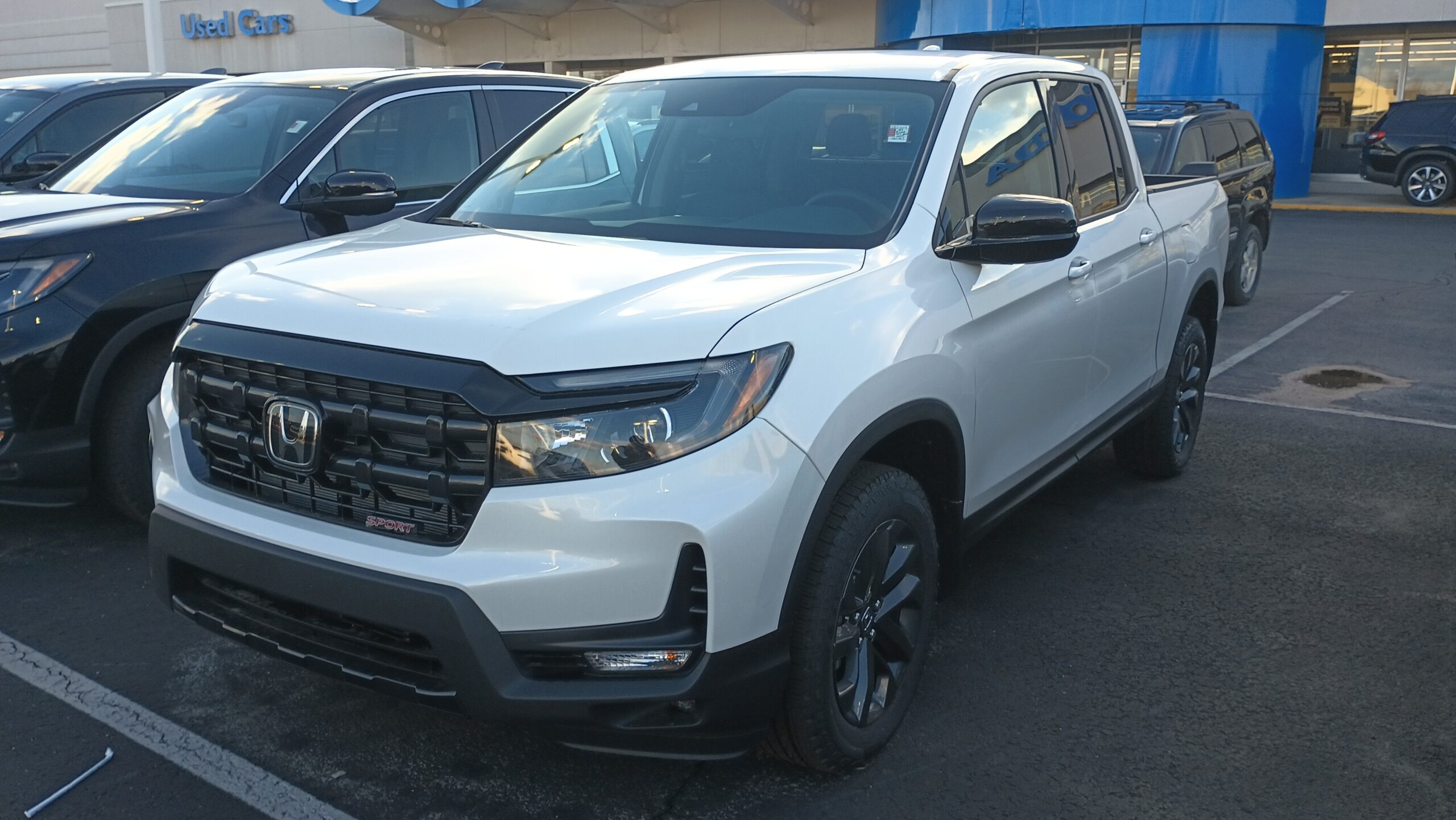
5. **Honda Ridgeline**
The Honda Ridgeline often navigates somewhat under the radar within the highly competitive truck market, yet when the metric of total cost of ownership is applied, this midsize unibody pickup consistently performs far beyond its perceived weight class. By skillfully blending the comfortable characteristics of a crossover with the practical utility of a pickup, the Ridgeline reliably delivers low operating costs, an exceptional track record of reliability, and a consistently strong resale value—all of which collectively establish it as an outstanding choice for buyers who are keenly focused on cost-efficiency.
Distinguishing itself from the majority of body-on-frame trucks, the Ridgeline is constructed upon a unibody platform, a design shared with the highly successful Honda Pilot SUV. This architectural choice imbues it with a notably smoother ride quality, superior fuel efficiency, and inherently fewer wear-and-tear components, which translates directly into reduced long-term expenses. It is powered by a rigorously proven 3.5-liter V6 engine that generates a respectable 280 horsepower and achieves solid fuel economy figures of 18 mpg in the city and 24 mpg on the highway—impressive statistics for a midsize pickup in its class, especially given its capabilities.
What truly elevates the Ridgeline and sets it apart is its exemplary reliability record. Year after year, it consistently garners top-tier ratings from prestigious organizations like Consumer Reports and J.D. Power for its exceptional durability and high levels of owner satisfaction. Fewer unscheduled visits to the service shop invariably mean lower repair bills and, crucially, more invaluable time spent on the road, actively contributing to a lower overall TCO. Furthermore, maintenance costs for the Ridgeline are notably minimal, a benefit stemming from Honda’s widely accessible service network and the truck’s straightforward, uncomplicated mechanical design.
Another significant factor bolstering the Ridgeline’s low TCO is its impressive ability to command a high resale value. Honda vehicles, particularly its trucks, are well-known for their excellent value retention, and the Ridgeline is no exception to this rule. It appeals to a distinct and dedicated audience: those who desire the versatility of a pickup truck but prefer to avoid the harsh ride characteristics or the typically adverse fuel economy trade-offs associated with more traditional body-on-frame trucks. This specific market appeal consistently ensures strong demand for used models, thereby preserving its value effectively.
Insurance premiums for the Ridgeline are also typically lower than those for many of its competitors, a result of its outstanding safety ratings, its inherent unibody structure, and a generally lower risk profile as assessed by insurance providers. Adding to its value proposition, its array of standard features—which include the comprehensive Honda Sensing suite of safety technologies, a lockable in-bed trunk for secure storage, and an innovative dual-action tailgate—all enhance convenience without necessitating expensive additional add-ons or upgrades, further cementing its value.
While the Honda Ridgeline may not necessarily win over the most ardent off-road enthusiasts or those requiring extreme heavy hauling capabilities, it truly excels in providing urban and suburban versatility. Arguably, it is the most user-friendly truck in its segment. For homeowners, individuals with light-duty utility needs, or anyone whose priority is to achieve low ownership costs coupled with superior daily comfort, the Ridgeline stands as one of the smartest and most financially sound long-term investments available in the truck world today. It’s a testament to thoughtful design meeting practical needs.
While pickup trucks are celebrated for their utility and versatility, not all prove to be sound long-term investments. Some models, despite impressive power or luxury, come with a hidden high Total Cost of Ownership (TCO). Buyers focusing solely on the initial sticker price might find these trucks become financial burdens over time, due to rapid depreciation, excessive fuel consumption, costly repairs, or steep insurance premiums.
This section highlights five trucks among the most expensive to own, considering long-term expenses over 5 to 10 years. These vehicles often captivate with flashy features, but frequently incur higher operating costs and may not retain their value well. For buyers aiming to maximize long-term value, these models warrant caution unless their unique advantages justify the added expense.
Car Model Information: 2017 Honda Ridgeline Black
Name: Honda Ridgeline
Manufacturer: Honda
Caption: 2022 Honda Ridgeline
Production: 2005–early 2015,2016–present
ModelYears: 2006–2014,2017–present
Assembly: Alliston, Ontario
Class: Pickup truck#Mid-size pickup truck
BodyStyle: 4-door pickup truck
Layout: ubl
Categories: 2010s cars, All-wheel-drive vehicles, All Wikipedia articles written in American English, Articles with short description, CS1 maint: multiple names: authors list
Summary: The Honda Ridgeline is a mid-size pickup truck manufactured and marketed by Honda since the 2006 model year, over two generations in a unibody, crew–cab, short-box configuration with a transverse-mounted engine.
Get more information about: Honda Ridgeline
Buying a high-performing used car >>>
Brand: Honda Model: Ridgeline
Price: $25,888 Mileage: 77,539 mi.
Read more about: Tech Shame? 14 Car Features That Instantly Reveal Your Ride’s Age – What’s the Least Smart?
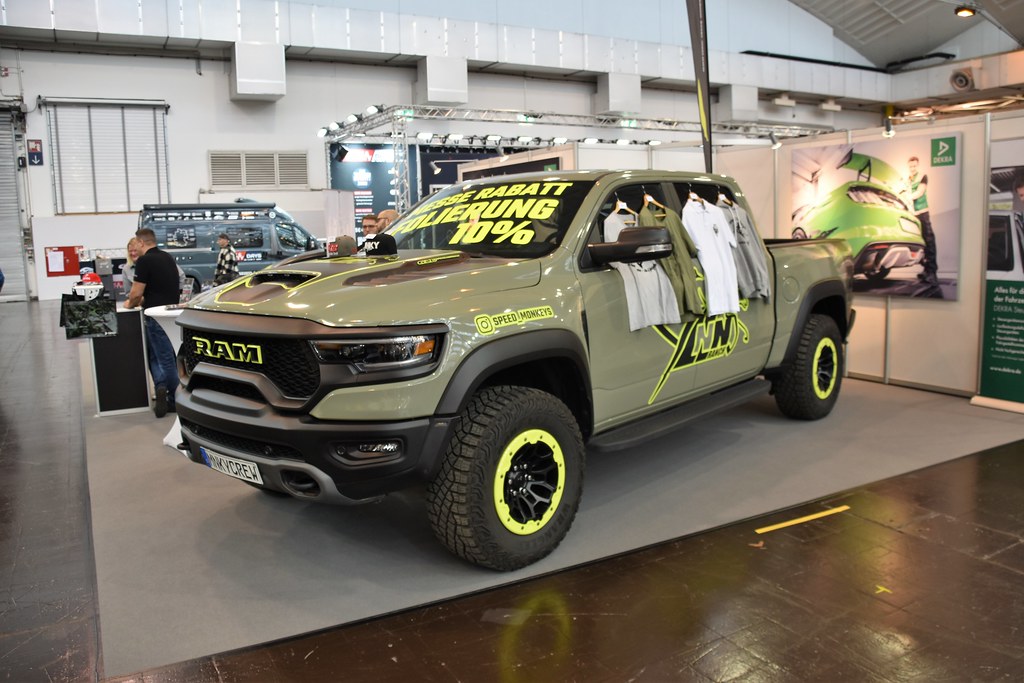
6. **RAM 1500 TRX**
The RAM 1500 TRX is a marvel of modern truck engineering, an undisputed beast on and off the road. Its supercharged 6.2-liter HEMI V8 pumps out 702 horsepower, making it one of the most powerful and exhilarating pickups ever crafted. Designed to rival the Ford Raptor, the TRX offers an absolute thrill for enthusiasts, commanding attention wherever it goes.
However, this extraordinary performance comes at a considerable financial cost in total cost of ownership. The TRX delivers an abysmal EPA-estimated 10 mpg city and 14 mpg highway, making it among the least fuel-efficient vehicles available. Beyond fuel, maintenance and repair costs are substantially higher, as it uses specialized, high-performance components expensive to replace. Every aspect, from suspension to drivetrain, is more complex and costly to maintain than a standard half-ton pickup.
Depreciation also emerges as a significant financial drawback. While initially in high demand, interest has diminished, leading to declining resale values and steeper losses for owners amidst rising fuel costs. High insurance premiums further compound the issue, driven by its powerful engine, aggressive styling, and performance classification. With its steep initial price, often exceeding $80,000, the TRX undeniably becomes one of the most expensive trucks to own over five years. For buyers prioritizing long-term value, the RAM 1500 TRX is better admired from afar than owned daily.
Car Model Information: 2024 Buick Enclave Premium FWD
Caption: 2021 Ram 1500 TRX
Name: Ram 1500 TRX
Aka: Ram Rebel TRX (prototype)
Manufacturer: Ram Trucks
Production: December 2020 – February 2024
ModelYears: unbulleted list
Assembly: Sterling Heights, Michigan
Layout: Front-engine, four-wheel-drive layout
BodyStyle: crew cab
Related: Unbulleted list
Engine: Unbulleted list
Transmission: ZF Friedrichshafen,ZF 8HP transmission#8HP95,Automatic transmission
Wheelbase: cvt
Length: cvt
Width: cvt
Height: cvt
Weight: cvt
Designer: Mike Gilliam
Categories: 2020s cars, All-wheel-drive vehicles, All Wikipedia articles in need of updating, Articles with short description, Cars introduced in 2020
Summary: The Ram 1500 TRX is a high-performance variant of the fifth-generation Ram 1500 (DT) pickup truck produced by the Ram Trucks division of Stellantis. The TRX name was based on the Ram Rebel TRX concept that was shown at the 2016 State Fair of Texas as an engineering, design and consumer-interest study. Following consumer feedback, the company announced on June 1, 2018, that it would place the truck into production for the 2021 model year. The truck was produced during the 2021 through 2024 model years. The TRX was dropped after the 2024 model year because it cannot be modified to meet tougher automotive emissions standards, and the company’s shift towards electrification. The last special edition TRX was the Ram 1500 TRX Final Edition. The last Ram 1500 TRX was produced on February 16th 2024. A similar truck, the Ram 1500 RHO was introduced, but it is not a direct successor to the TRX. The model year was cut short because of RAM launching 2025 trucks 7 months earlier than their usual model year release date. However, in late July 2025, Stellantis CEO Antonio Filosa has officially confirmed that the TRX will be returning for the 2026 model year.
The TRX competed with Ford Raptor family of high-performance pickup trucks.
Get more information about: Ram 1500 TRX
Buying a high-performing used car >>>
Brand: RAM Model: 1500 TRX
Price: $29,997 Mileage: 37,001 mi.
Read more about: Beyond the Pavement: Ranking 14 Off-Road Titans Ready for Earth’s Toughest Challenges

7. **Nissan Titan XD**
The Nissan Titan XD was launched to bridge the gap between light-duty and heavy-duty pickups, initially appearing as a value alternative to domestics. However, it’s proven one of the least cost-efficient trucks to own due to poor resale value, high maintenance, and limited aftermarket support. Its ambiguous positioning makes it bulkier and thirstier than standard half-ton competitors, yet not a true heavy-duty truck.
The 5.6-liter Endurance V8 engine, while powerful, is notoriously fuel-hungry, returning just 14–15 mpg combined. These low figures accumulate into substantial fuel costs compared to more efficient V6 or hybrid rivals. Depreciation is another critical problem, as Nissan’s full-size trucks struggle to maintain strong resale values, and the Titan XD is no exception. Limited market appeal and declining sales mean used prices have dropped considerably, leading to steeper losses for owners.
Maintenance and parts availability also contribute to high TCO. Limited platform updates make sourcing qualified service and reasonably priced replacement parts challenging, driving up long-term costs. Insurance premiums aren’t particularly low either, given its large footprint and limited safety tech. Without a hybrid alternative, there’s little relief for buyers seeking long-term savings, making it feel outdated and economically inefficient.
Read more about: Are EVs Really Worth It? The 13 Downsides Nobody Tells You About Before You Buy

8. **GMC Sierra 1500 Denali Ultimate**
The GMC Sierra 1500 Denali Ultimate represents the pinnacle of luxury and tech in pickups, offering massaging leather seats, premium audio, Super Cruise, and a 6.2-liter V8. Its interior experience rivals a high-end luxury SUV, dazzling with comfort and potent performance. However, this truck also ranks among the most expensive to own long-term when considering its total cost of ownership.
The primary hurdle to manageable TCO is its exceptionally high purchase price, often exceeding $80,000, placing it in luxury car territory. This inflates depreciation risk, as the premium paid for high-end features erodes rapidly in the used market, leading to greater value loss per mile. Fuel consumption is also considerable; the 6.2-liter V8 achieves only 14–16 mpg combined, causing fuel costs to climb steeply with premium gasoline.
Maintenance and repair expenses are notably higher due to sophisticated electronics and luxury-grade components, which are costly to repair or replace. Advanced features often require specialized, dealer-level diagnostics, leading to expensive out-of-warranty repairs. Insurance premiums are consistently elevated due to its high market value and extensive equipment. For buyers prioritizing long-term costs, the Denali Ultimate occupies the upper echelons of the TCO spectrum.
Car Model Information: 2024 Buick Enclave Premium FWD
Name: Chevrolet Silverado/GMC Sierra
Caption: 2022 Silverado 2500HD High Country
Manufacturer: General Motors
Aka: unbulleted list
Production: 1998–present
Assembly: unbulleted list
Class: unbulleted list
BodyStyle: unbulleted list
Layout: unbulleted list
Predecessor: unbulleted list
Categories: 2000s cars, 2010s cars, 2020s cars, All-wheel-drive vehicles, All Wikipedia articles written in American English
Summary: The Chevrolet Silverado is a range of trucks manufactured by General Motors under the Chevrolet brand. Introduced for the 1999 model year, the Silverado is the successor to the long-running Chevrolet C/K model line. Taking its name from the top trim level from the Chevrolet C/K series, the Silverado is offered as a series of full-size pickup trucks, chassis cab trucks, and medium-duty trucks. The fourth generation of the model line was introduced for the 2019 model year.
The Chevrolet Silverado shares mechanical commonality with the identically related GMC Sierra; GMC ended the use of the C/K nomenclature a model generation prior to Chevrolet. In Mexico, high-trim level versions of the Silverado use the Chevrolet Cheyenne name (not to be confused with the 2003 concept). Competing against the Ford F-Series, Ram pickup, Toyota Tundra, and Nissan Titan, the Silverado is among the best-selling vehicles in the United States, having sold over 12 million trucks since its introduction in 1998 as a 1999 model year.
Get more information about: Chevrolet Silverado
Buying a high-performing used car >>>
Brand: GMC Model: Sierra 1500
Price: $29,997 Mileage: 37,001 mi.
Read more about: Luke Bryan’s American Truck Legacy: Exploring the Iconic Pickups That Define His Down-Home Roots and Country Spirit

9. **Toyota Tundra i-FORCE MAX**
The Toyota Tundra i-FORCE MAX, Toyota’s pioneering full-size hybrid pickup, promised enhanced fuel economy, massive torque, and modern tech, backed by legendary reliability. While it delivers on performance with 437 horsepower and 583 lb-ft of torque, this Tundra Hybrid surprisingly carries high long-term ownership costs, establishing it as one of the pricier trucks to maintain over time.
A key factor in its elevated TCO is the complex hybrid system: a twin-turbo V6 paired with an electric motor. This complexity can translate into higher maintenance and repair expenses, especially post-warranty. The 10-speed automatic transmission has also proven more expensive to service than simpler alternatives. Despite its hybrid designation, fuel economy is only marginally improved, with combined EPA rating of 20–22 mpg, often falling short in real-world driving compared to competitors.
The initial cost of i-FORCE MAX trims, particularly TRD Pro or Capstone editions, frequently exceeds $70,000. Resale values haven’t held as well as expected, with depreciation setting in faster due to its high price and new powertrain. Insurance rates are notably higher, especially for trims with off-road packages and luxury features. Combined with expensive OEM parts and specialized hybrid repairs, the Tundra Hybrid quickly moves into the “high TCO” category, challenging expectations of a budget-friendly hybrid.
Read more about: Beyond the Average: 10 Vehicles Engineered to Deliver Unrivaled Longevity on the Road
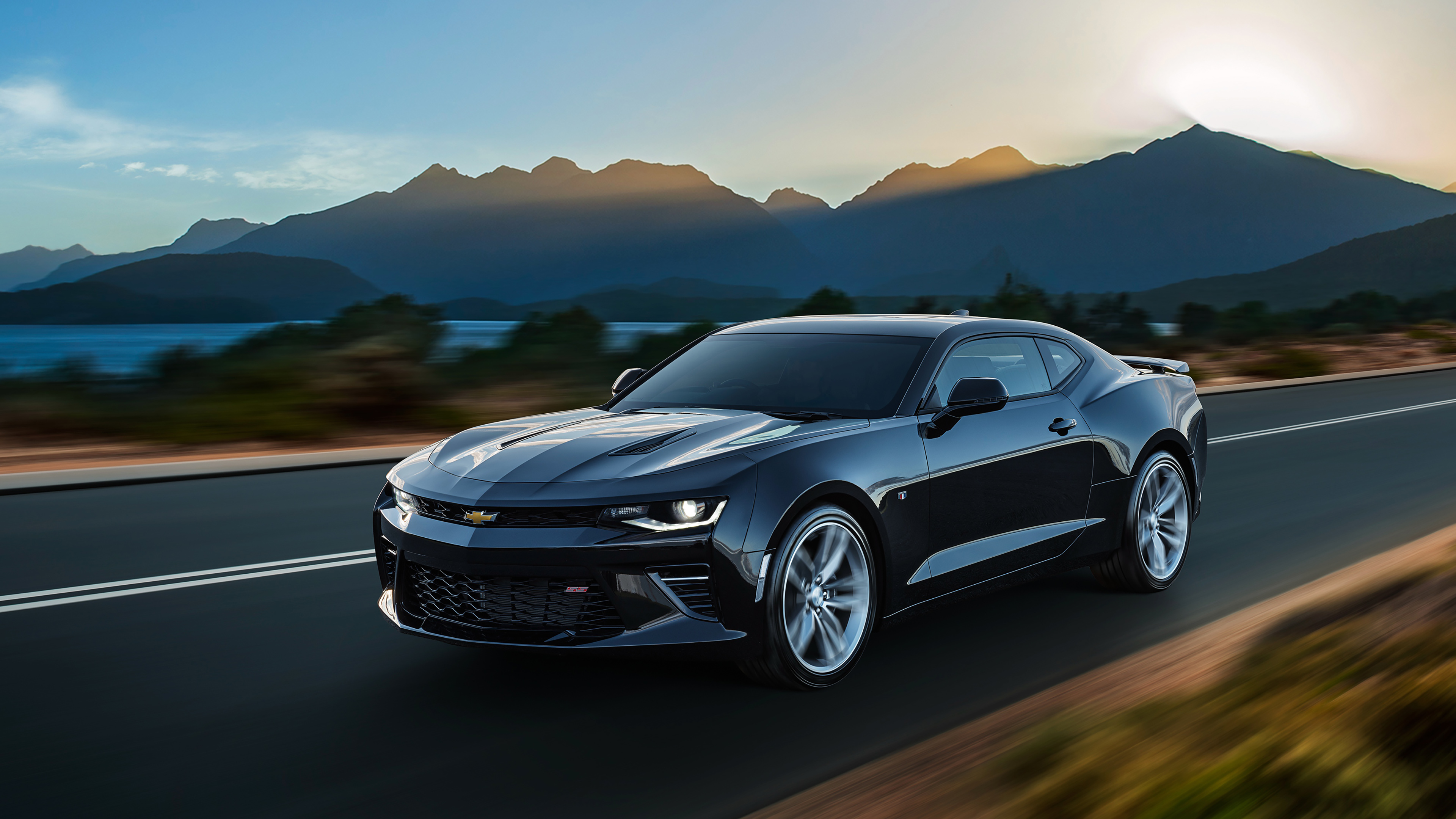
10. **Chevrolet Silverado 1500 3.0L Duramax**
On paper, the Chevrolet Silverado 1500 with the 3.0L Duramax turbo-diesel engine presents as a cost-efficient dream, boasting impressive fuel economy (up to 24 city/29 highway mpg) and excellent towing. However, its Total Cost of Ownership (TCO) can be surprisingly high, particularly for average truck owners whose driving habits may not align with its optimal use.
The upfront Duramax option adds $1,500–$2,500 or more to the base price. While diesel engines offer longevity, this comes with higher routine maintenance costs, including more expensive oil changes, fuel filter replacements, and DEF refills than gasoline trucks. Repair costs are also significantly higher if issues arise post-warranty; turbochargers, complex emissions systems, and injectors can rapidly accumulate expenses.
The Duramax’s complex emissions control systems raise concerns for long-term ownership, especially for drivers not accumulating high highway mileage, as short trips increase DPF issues requiring expensive cleanings or replacements. Depreciation is steeper than expected, as the market’s shift towards stricter emissions and electrification has reduced demand for light-duty diesels, impacting value retention. Unless owners consistently log high highway mileage, long-term costs may outweigh fuel savings compared to newer alternatives, making it a nuanced choice.
Car Model Information: 2024 Buick Enclave Premium FWD
Name: Chevrolet Silverado/GMC Sierra
Caption: 2022 Silverado 2500HD High Country
Manufacturer: General Motors
Aka: unbulleted list
Production: 1998–present
Assembly: unbulleted list
Class: unbulleted list
BodyStyle: unbulleted list
Layout: unbulleted list
Predecessor: unbulleted list
Categories: 2000s cars, 2010s cars, 2020s cars, All-wheel-drive vehicles, All Wikipedia articles written in American English
Summary: The Chevrolet Silverado is a range of trucks manufactured by General Motors under the Chevrolet brand. Introduced for the 1999 model year, the Silverado is the successor to the long-running Chevrolet C/K model line. Taking its name from the top trim level from the Chevrolet C/K series, the Silverado is offered as a series of full-size pickup trucks, chassis cab trucks, and medium-duty trucks. The fourth generation of the model line was introduced for the 2019 model year.
The Chevrolet Silverado shares mechanical commonality with the identically related GMC Sierra; GMC ended the use of the C/K nomenclature a model generation prior to Chevrolet. In Mexico, high-trim level versions of the Silverado use the Chevrolet Cheyenne name (not to be confused with the 2003 concept). Competing against the Ford F-Series, Ram pickup, Toyota Tundra, and Nissan Titan, the Silverado is among the best-selling vehicles in the United States, having sold over 12 million trucks since its introduction in 1998 as a 1999 model year.
Get more information about: Chevrolet Silverado
Buying a high-performing used car >>>
Brand: Chevrolet Model: Silverado 1500
Price: $29,997 Mileage: 37,001 mi.
Read more about: Unleashing Raw Power: A MotorTrend Deep Dive into the 11 Best Diesel Engines for Heavy-Duty Trucks
In the world of pickup trucks, the initial sticker price is truly just the beginning. Total Cost of Ownership (TCO) paints a much fuller, often surprising, picture, revealing how fuel costs, depreciation, maintenance, insurance, and repairs unfold over years of ownership. While low-TCO champions like the Toyota Tacoma and Ford Maverick demonstrate how smart design and reliability yield significant long-term savings, high-TCO models such as the RAM 1500 TRX and GMC Sierra Denali Ultimate, despite their power and luxury, come with substantial financial trade-offs. Ultimately, the best choice aligns with your priorities. For most buyers planning long-term ownership, understanding TCO is paramount, guiding you to a capable truck that serves your needs without unexpectedly draining your wallet down the road. Look beyond the brochure, consider all financial factors, and drive away in a truck that genuinely works for both your lifestyle and your budget.

